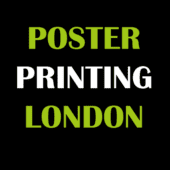Title: Crafting Eye-Catching Posters: Tips for a Stunning Design
Introduction:
Posters are powerful visual tools used to convey information, promote events, and captivate audiences. Whether you’re advertising a concert, announcing a sale, or sharing important messages, the design of your poster plays a crucial role in its effectiveness. Creating a poster that grabs attention and leaves a lasting impression requires careful consideration of design elements, layout, and messaging. In this guide, we’ll explore essential tips to help you make your poster look professional, engaging, and visually appealing.
- Define Your Purpose and Audience:
Before diving into the design process, clarify the purpose of your poster and identify your target audience. Understanding the message you want to convey and who you’re trying to reach will inform every aspect of your design choices, from color schemes to imagery and typography. - Keep It Simple and Clear:
Avoid cluttering your poster with excessive text or graphics. Instead, focus on conveying your message concisely and clearly. Use short headlines, bullet points, and impactful visuals to communicate key information effectively. Remember, a clutter-free design is easier for viewers to digest and more likely to grab their attention. - Choose an Eye-Catching Color Scheme:
Selecting the right color scheme can dramatically impact the visual appeal of your poster. Choose colors that complement your brand or the theme of your event while ensuring contrast between text and background for readability. Experiment with vibrant hues to make your poster stand out, but be mindful of maintaining harmony and balance in your design. - Pay Attention to Typography:
The typography you choose can significantly influence the tone and personality of your poster. Select fonts that align with your message and are easy to read from a distance. Consider using a combination of fonts to create visual hierarchy, with headlines and important information in bold or larger sizes to draw attention. - Utilize High-Quality Imagery:
Incorporating striking visuals or photographs can make your poster more engaging and memorable. Choose images that relate to your message and evoke the desired emotions in your audience. Ensure that your images are high-resolution and properly scaled to maintain clarity and avoid pixelation when printed. - Embrace White Space:
Don’t underestimate the power of white space in your poster design. White space, or negative space, helps create breathing room around elements and improves readability. Use it strategically to guide the viewer’s eye, highlight important information, and enhance overall visual appeal.
Conclusion:
Crafting a visually appealing poster requires thoughtful consideration of design principles, messaging, and audience engagement. By following the tips outlined in this guide, you can create posters that not only look good but also effectively communicate your message and capture the attention of your target audience. Whether you’re promoting an event, advertising a product, or sharing important information, a well-designed poster can make a significant impact and leave a lasting impression on viewers.
